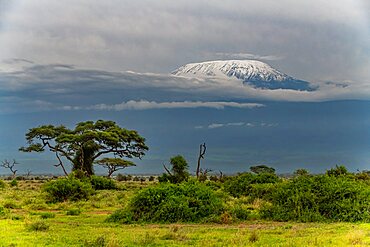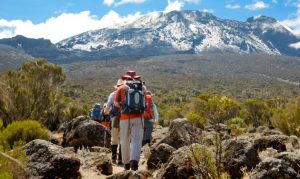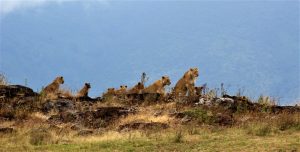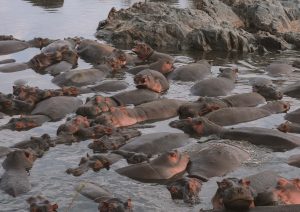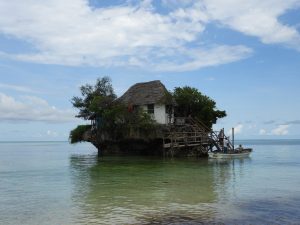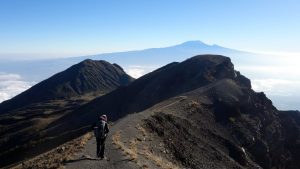Climbing Kilimanjaro through the Machame Route: Success Rate
Climbing Kilimanjaro is an extraordinary challenge, and among the various routes to the summit, the Machame Route stands out as one of the most popular choices. Known for its scenic beauty, it offers a more gradual ascent compared to some other paths. The route’s popularity comes from its relatively high success rate, excellent acclimatization profile, and the diversity of landscapes encountered along the way. This extensive guide will walk you through everything you need to know about the Machame Route, focusing particularly on success rates and what it takes to reach the summit of Africa’s highest peak.
Overview of the Machame Route
The Machame Route, often referred to as the “Whiskey Route,” is a 62 km (approximately 37 miles) path that ascends Kilimanjaro from the southwestern side of the mountain. This route is considered moderately difficult but offers an excellent acclimatization schedule due to its longer itinerary, which includes multiple ascents and descents before the final summit attempt. The trek is typically completed over six or seven days, with the longer option being the better choice for higher summit success.
Starting from the Machame Gate, trekkers journey through dense rainforest, ascend to moorlands, then to alpine desert, and eventually reach the arctic-like conditions near the summit. The variety of ecosystems trekkers pass through makes the Machame Route incredibly scenic, offering a visually diverse experience in addition to the physical challenge of the climb.
Success Rate on the Machame Route
Success rates on Kilimanjaro are influenced by several factors, including the route, duration, guide expertise, and individual fitness levels. The Machame Route has one of the highest success rates on Kilimanjaro, particularly when done over seven days. The extra day makes a significant difference in allowing the body to adjust to the altitude, giving climbers a much better chance of reaching Uhuru Peak.
On average, the success rate for climbers attempting the Machame Route on a six-day itinerary is around 60-65%. However, for those opting for the seven-day climb, the success rate increases to about 85-90%. The additional day helps trekkers to better acclimatize to the thinner air, reducing the risk of altitude sickness and improving overall stamina.
The Importance of Acclimatization
One of the key reasons why the Machame Route has a relatively high success rate is the acclimatization schedule it offers. As you ascend Kilimanjaro, your body has to adapt to the decreasing oxygen levels. Without proper acclimatization, trekkers risk experiencing altitude sickness, which can range from mild headaches and dizziness to severe, life-threatening conditions like High Altitude Pulmonary Edema (HAPE) or High Altitude Cerebral Edema (HACE).
The Machame Route follows a “climb high, sleep low” strategy, which is critical for acclimatization. For instance, on Day 3, climbers reach Lava Tower at 4,630 meters (15,190 feet) but then descend to Barranco Camp at 3,976 meters (13,044 feet) to sleep. This process of ascending to a higher altitude during the day and descending to a lower altitude for rest allows the body to gradually adjust to the lower oxygen levels, which is essential for reducing altitude-related illnesses.
The Climb: Day-by-Day Breakdown
Day 1: Machame Gate to Machame Camp
- Elevation: 1,800 meters (5,905 feet) to 2,835 meters (9,300 feet)
- Distance: 11 km (7 miles)
- Duration: 5-7 hours
The journey begins at Machame Gate, where climbers are greeted by lush rainforest. The path meanders through thick vegetation, and the air is humid and cool. The gradual ascent allows trekkers to ease into the climb, with the dense tree canopy providing shade for most of the day. Arriving at Machame Camp, the first glimpse of Kilimanjaro’s summit can be seen through breaks in the forest.
Day 2: Machame Camp to Shira Camp
- Elevation: 2,835 meters (9,300 feet) to 3,750 meters (12,303 feet)
- Distance: 5 km (3 miles)
- Duration: 4-6 hours
Day 2 starts with a steep ascent, as the forest thins out and the landscape transitions into heathland and moorland. The path offers breathtaking views of the surrounding valleys and plains below. As climbers reach Shira Camp, they begin to feel the effects of altitude, with the air noticeably thinner. The camp, situated on a plateau, provides stunning views of Kibo Peak and the Shira Cathedral.
Day 3: Shira Camp to Barranco Camp (via Lava Tower)
- Elevation: 3,750 meters (12,303 feet) to 3,976 meters (13,044 feet)
- Distance: 10 km (6.2 miles)
- Duration: 6-8 hours
This is a critical day for acclimatization. Trekkers ascend to Lava Tower, which stands at 4,630 meters (15,190 feet), where they can take a break and enjoy lunch. At this altitude, climbers often feel the effects of low oxygen levels, making it a challenging part of the trek. After spending time at Lava Tower, the group descends to Barranco Camp for the night. This descent helps the body acclimatize, increasing the chances of reaching the summit.
Day 4: Barranco Camp to Karanga Camp
- Elevation: 3,976 meters (13,044 feet) to 3,995 meters (13,106 feet)
- Distance: 5 km (3 miles)
- Duration: 4-5 hours
One of the most iconic moments of the Machame Route is the Barranco Wall, which climbers tackle on Day 4. The wall looks intimidating but is more of a scramble than a technical climb. Once at the top, climbers are rewarded with stunning views of the surrounding landscape and the path ahead. After crossing ridges and valleys, the day ends at Karanga Camp, a critical point for acclimatization before the final push to higher altitudes.
Day 5: Karanga Camp to Barafu Camp
- Elevation: 3,995 meters (13,106 feet) to 4,673 meters (15,331 feet)
- Distance: 4 km (2.5 miles)
- Duration: 4-5 hours
On Day 5, trekkers make their way to Barafu Camp, the base camp for the summit attempt. The route becomes more challenging as the air continues to thin, and trekkers begin to feel the effects of altitude more intensely. Barafu Camp is a stark, rocky landscape with little vegetation, and temperatures can drop dramatically at night. After arriving in the early afternoon, trekkers rest and prepare for the summit attempt, which begins around midnight.
Day 6: Summit Day (Barafu Camp to Uhuru Peak, then to Mweka Camp)
- Elevation: 4,673 meters (15,331 feet) to 5,895 meters (19,341 feet), then down to 3,068 meters (10,065 feet)
- Distance: 17 km (10.5 miles)
- Duration: 12-16 hours
Summit day is the most challenging part of the climb, both physically and mentally. The ascent begins in the dark, with headlamps guiding the way. The climb to the summit is slow and steady, with frequent breaks to combat the altitude. The first major milestone is Stella Point at 5,739 meters (18,828 feet), where climbers get their first glimpse of the sunrise. From Stella Point, it’s another 1-2 hours to Uhuru Peak, the highest point on Kilimanjaro and the roof of Africa.
Reaching Uhuru Peak is an overwhelming achievement, the culmination of days of effort, perseverance, and determination. After celebrating at the summit, trekkers begin the long descent to Mweka Camp, where the air is thicker and warmer, offering much-needed relief from the cold and exhaustion of summit day.
Day 7: Mweka Camp to Mweka Gate
- Elevation: 3,068 meters (10,065 feet) to 1,640 meters (5,380 feet)
- Distance: 10 km (6.2 miles)
- Duration: 3-4 hours
The final day is a relatively easy walk through the rainforest as the team makes their way down to Mweka Gate. After signing out at the park headquarters and receiving summit certificates, the adventure comes to an end.
Factors That Contribute to Success
Proper Acclimatization
As mentioned earlier, acclimatization is one of the most crucial factors in determining success on the Machame Route. The itinerary’s gradual ascent and “climb high, sleep low” strategy allow the body to adjust to the altitude in a more controlled manner. Opting for the seven-day itinerary significantly improves acclimatization, giving climbers more time to rest and recover between difficult stretches.
Fitness Level
While technical climbing skills aren’t required for Kilimanjaro, a good level of physical fitness is necessary. The trek involves long days of hiking, steep ascents, and a significant elevation gain. Trekkers should prepare with cardiovascular training, strength conditioning, and practice hikes to build stamina and endurance.
Mental Toughness
In addition to physical fitness, mental resilience plays a huge role in the success of any Kilimanjaro climb. The final push to the summit is especially grueling, with cold temperatures, low oxygen levels, and exhaustion making it easy to want to give up. Staying positive, focused, and determined to reach the top is essential.
Experienced Guides
Having experienced and knowledgeable guides can make all the difference in a successful Kilimanjaro climb. Guides monitor trekkers for signs of altitude sickness, set an appropriate pace, and offer encouragement along the way. They are also trained to handle any emergencies that may arise, ensuring the safety of the group.
Common Challenges
Altitude Sickness
Altitude sickness remains the biggest challenge for trekkers on Kilimanjaro. Even with proper acclimatization, some climbers may experience symptoms such as headaches, nausea, and dizziness. The best way to combat altitude sickness is to take it slow, drink plenty of water, and listen to the advice of the guides.
Cold Temperatures
The weather on Kilimanjaro can vary greatly, with temperatures dropping well below freezing during the night, especially at higher altitudes. Layering clothing and having proper gear is essential for staying warm during the ascent.
Fatigue
The combination of long days, steep inclines, and high altitudes can lead to extreme fatigue. Getting enough rest at camp and pacing yourself throughout the trek is vital for conserving energy for the summit push.
Final Thoughts
The Machame Route offers a challenging but highly rewarding way to reach the summit of Kilimanjaro. With a well-planned itinerary that allows for proper acclimatization and stunning scenery that changes with each passing day, it’s no surprise that this route has one of the highest success rates on the mountain. For those prepared both physically and mentally, the Machame Route provides an unforgettable experience and the best chance to stand atop Africa’s highest peak.

